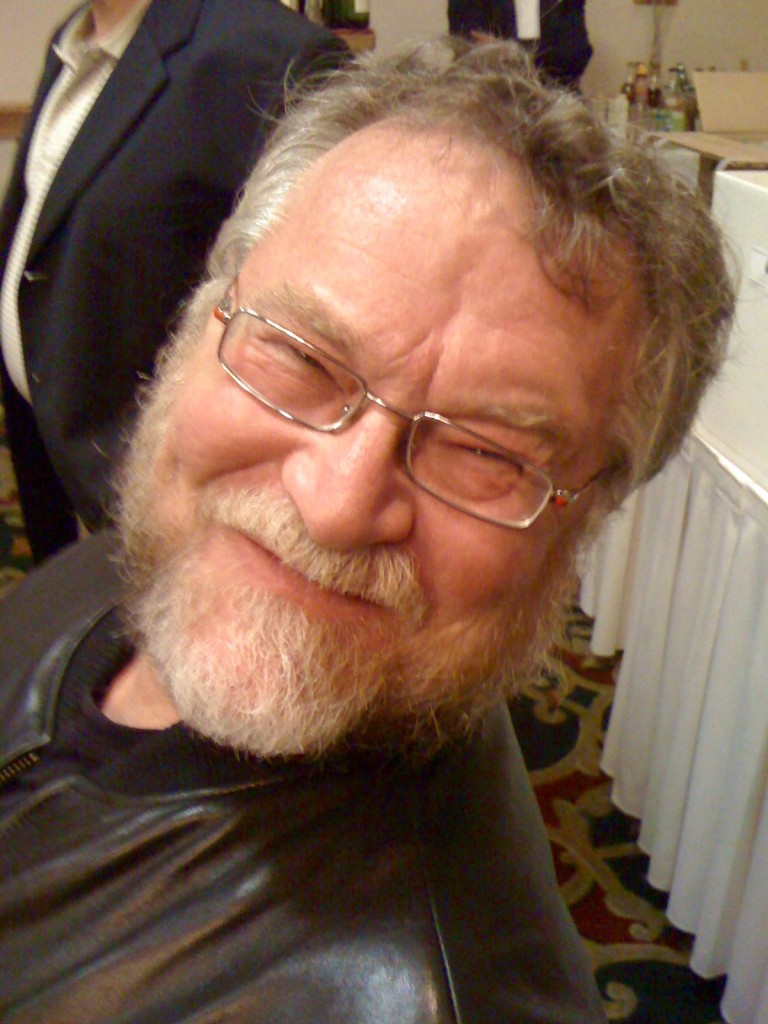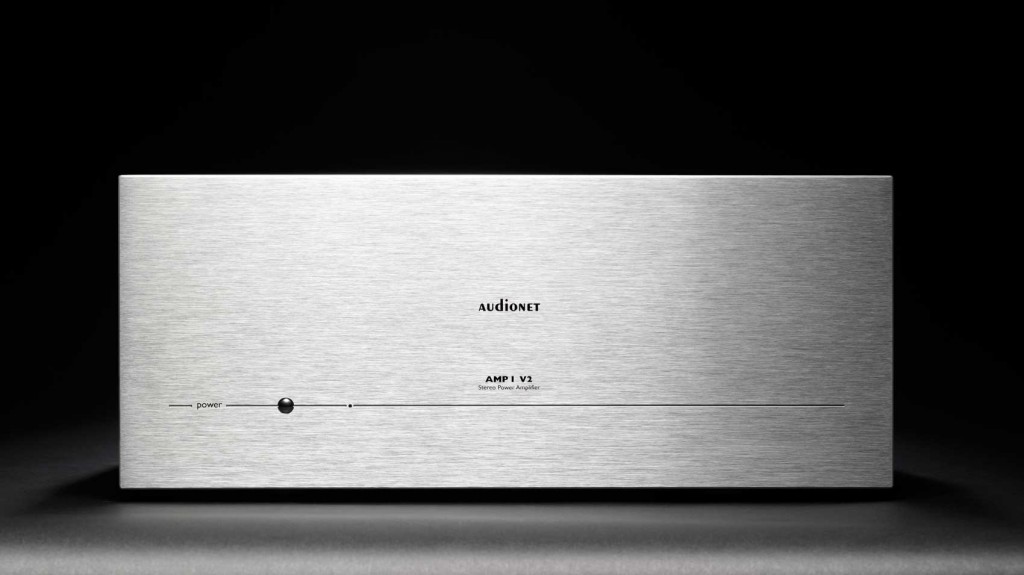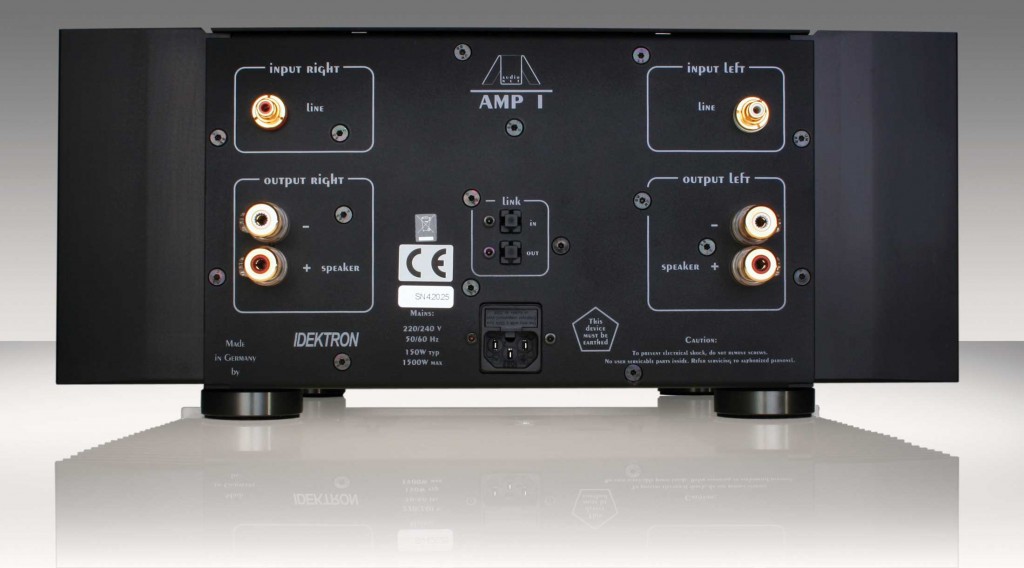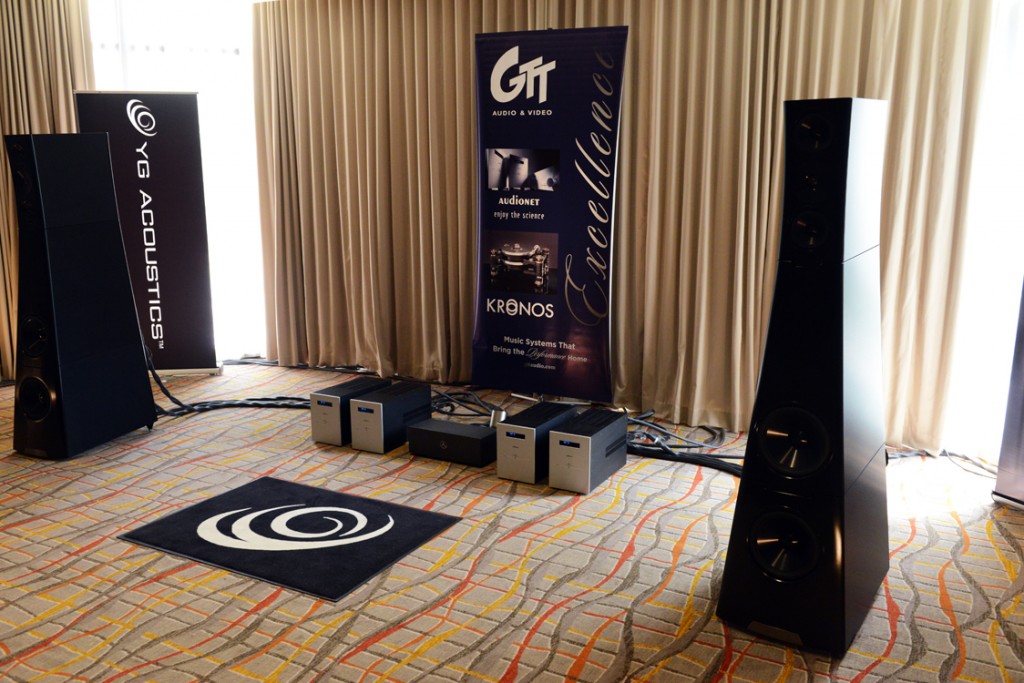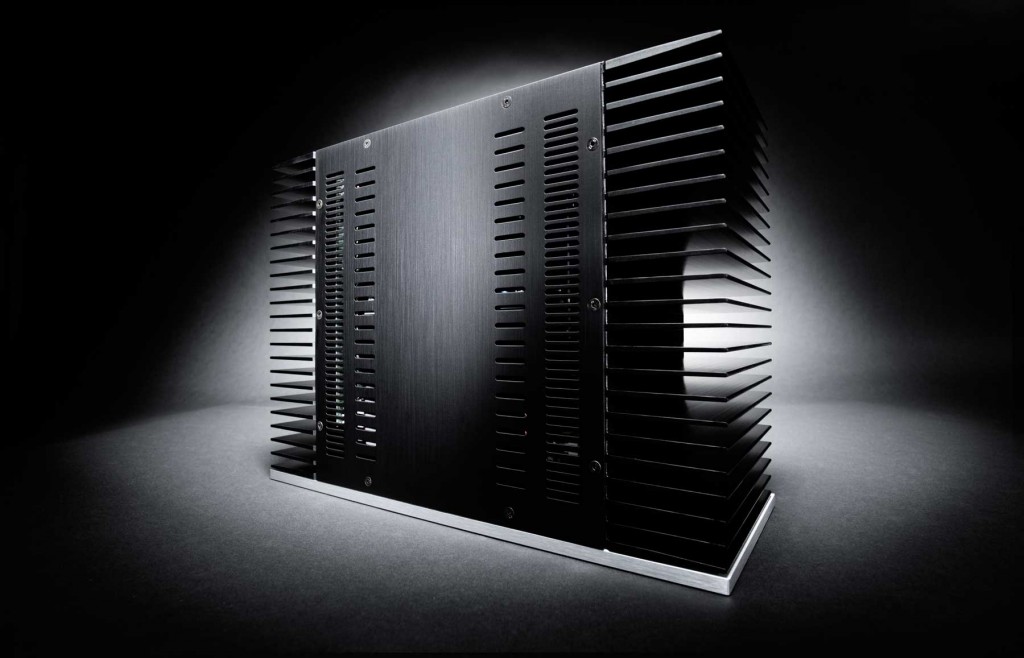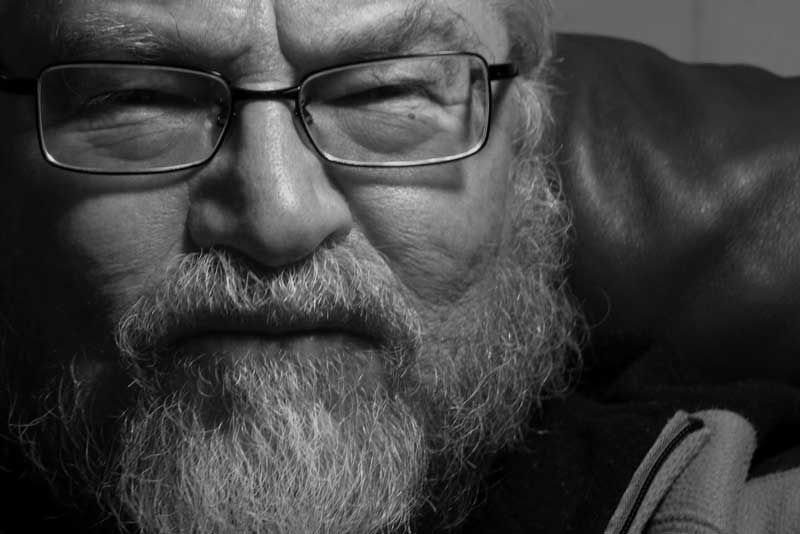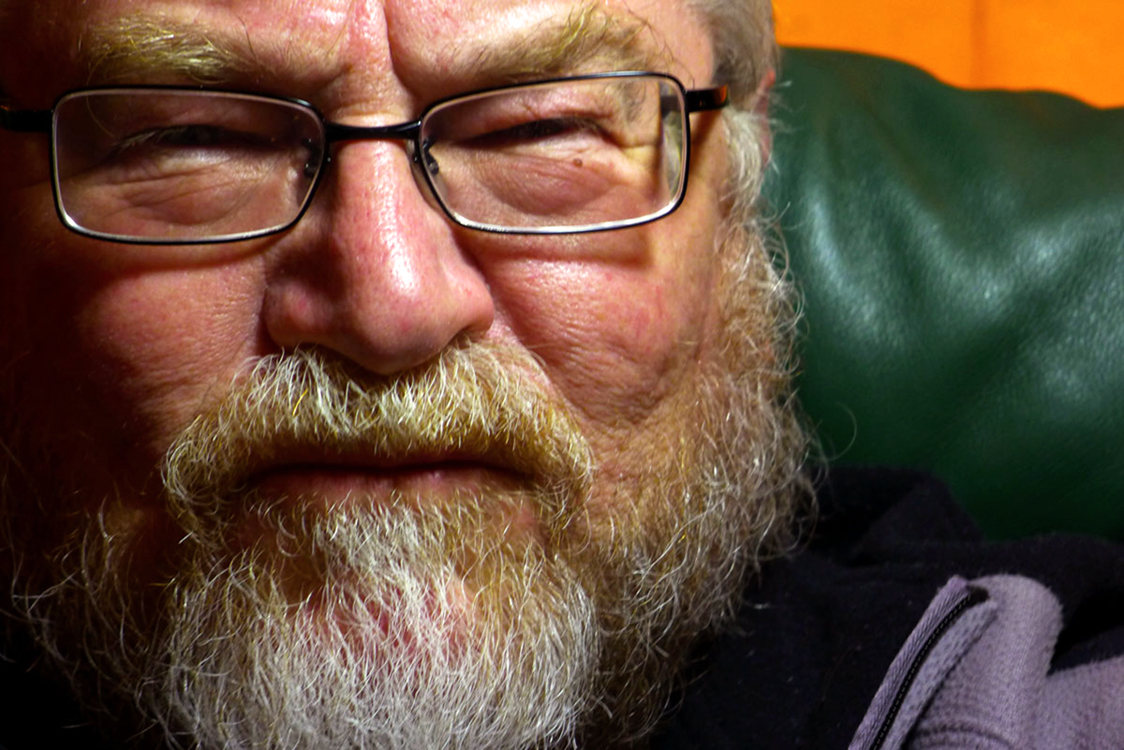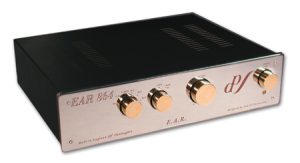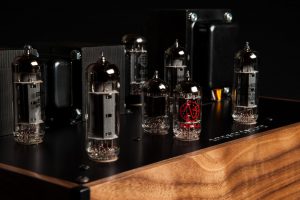The Always Unimaginable Future
The First World War pre-dated the arrival of vivid sonic capture. It's not difficult to imagine that—despite the assassination of the Archduke Ferdinand in Sarajevo in 1914, which let loose animosities ready for release after Europe's and Asia's 1870 conflicts—almost anything might have helped stave off the disaster of that delusional "war to end all wars." Teddy Roosevelt's long promised nude dinner party could've made all the difference... if the right people attended. One sees in retrospect that demonic combat was literally unavoidable. It surprised everyone nearby who took the brunt of its murderous mayhem. Fifteen years afterward, as Hitler emerged in Germany, Robert Musil's amazing novel, The Man without Qualities, summarized the depth of Europe's early 20th century dystopic illness.
If the gaggle of old fart generals in the aggregated armies of Germany, France and Russia had (a) constant access to well-recorded Viennese waltzes and Beethoven's "Ode to Joy"; or, (b) an adequate squad of ladies of the night sufficient to placate their erotic insufficiencies, a generation of young men slaughtered for no useful reason might've been spared. One counter-intuitive benefit of all that carnage was the unusually rapid escalation of scientific advance that followed the death of so many mature scientists in the war. Older scientists are generally more conservative than younger thinkers and researchers. The first half of the 20th century was defined not only by two enormous wars and the Great Depression in between, but by the acceleration of scientific breakthroughs and technological advances... earth-jarring changes that would have been restrained by a traditional cohort of professionally more cautious scientists.
The salubrious value of reproduced musical joy is a predictable (if, also, never adequate) counter to war's mindless insanity. Edison's 1877 invention of the phonograph needed better funding and quicker dissemination to strategically disrupt the grotesque European cultural scene and its deformations. Such musings resemble "back to the future" make-believe. And yet, I'll stake my claim to the enduring need—yet unfulfilled—for a massive enlargement of both musical and audio literacy if our species is not to relapse once more (as its footprints creep ever nearer) to repeat the insidious mistake of militaristic rivalries amassed at the ready to revisit old hatreds, fresh territorial grievances.
Making It Happen
Let's look at such redemptive hope from three points of view. Needed most of all are enormous infusions of the greatest music recorded, infusions wherever young hearts and souls are forming the core of life's committed feeling and value. Second, just as necessary are redundant audio systems to play great music—think of Duke Ellington, John Fogarty & the Beatles—so that our witless contemporary culture might regain lost sanity. Three, asking ourselves how to research this objective, we decide where to place musical gear and introduce our demented culture to peace of mind and its lyrical vibes. One might start anywhere and continue unabated with an assault on musical and audio illiteracy, perhaps resembling invading armies storming the French coastline long ago.
This goal can be enhanced by Bill Parish, at his GTT headquarters, if you beg entry into his outrageously gorgeous audio domain. Bill Parish is a man who knows music and high-end gear. GTT is a place to trust with the fragility of your heart's inner core at stake.
When you visit GTT central, squatting at a secret location somewhere in New Jersey—that is, IF you're invited and taken (blindfolded) to its palatial digs—you'll soon discover, once your bearings are recalibrated, that GTT is a veritable playground for audiophiles and music junkies. This is no side trip for audio fools and musical knaves. I advise you to pack a lunch because the on site tour of multiple sound systems demands more than a short stop over. It can tax the stamina of a sturdy being.
Bill Parish, its creator and CEO, is a sturdy fellow. He is not a member of so called "normal folks." He's a cross between a gentle lion and a smiling Pooh Bear. That comparison barely scratches the paint on his car collection. It overlooks his world-class watch museum drawn from frequent visits to Switzerland (land of enchanted peace and the one bastion Hitler's vicious storm troopers could not breach). The long-vetted Parish name, synonymous with forgotten Olde World values, heralds a moment in history when counts, dukes and earls competed for recognition at Europe's finest Baccarat tables. Sublimated, that lineage endures. Bill Parish resembles a James Bond stand in scooping up chips to cash out. He may reside first, last and each place in between on the short list of an audiophile's audiophile. One can say without contradiction that his dedication to the audio "high end" has been thoroughly vetted. The man's discretion and cheerful modesty have kept him out of unneeded limelight. There are reasons to think that error will soon be rectified. I've never visited any private house or commercial audio emporium with as many state-of-the-art systems in use at a moment's call. Bill Parish's GTT showroom is a bedazzling aggregation of five separate and superior systems in place, with several others ready to be harnessed at a moment's call.
It takes more than a wee touch of chutzpah and incidental aesthetic glory to flummox a devoted music lover. Thus, my day in the presence of this audio-music empire marked a turning point in my comprehension of that neglected term sangfroid. Parish's GTT outback literally sanctifies the cryptic meaning of the Herculean motto, "more is better than anything less."
Why Am I Telling You This . . . ?
...because GTT's iconoclastic audio footprint seems not merely to be "on it"—as my dear pal Tommy Flanagan (who spent a large chunk of his pianistic career traveling the globe with Ella Fitzgerald and Sarah Vaughan) often said about things superior—but represents the embodiment of an audio oasis bearing sober warning with seductive welcome. Such a double gesture is perfect with sub rosa ambivalence. Quenched by lyric perfection, one does not die tragically, as Shakespeare prophesied our most feared fate in King Lear. Music revives pain's innocence from a world gone mad. Are you strong enough for that?
You may recall that moment in Lear when the old man's derangement subtends all hope: "like rats that raven down their proper bane, we drink a thirsty evil; and when we drink, we die." At the risk of dampening noon's cheer, I'll assert that such a bitter nostrum also accompanies Dante's trek into Hades with Vergil's guidance: ABANDON ALL HOPE YE WHO ENTER HERE ! Pessimism summons human history as its ally.
Audionet AMP 1 V2 Stereo Amplifier
Here we're in a better place. Awhile back I asked Bill Parish, the redoubtable GTT honcho squired within the gentle swales of interior New Jersey, if I might hear a unit from his prolific arsenal of ultra high-end gear. Soon an Audionet I V2 stereo amp showed up. Not long after, I discovered that this is no ordinary amp. At 2 ohms it delivers 450 watts (2 x 300W @ 4 ohms). Its extremely heavy (28 kg.) 10 mm brushed aluminum casing claims attention immediately. In operation, the amp is somewhat tricky—perhaps I should say "subtle"—because what you hear is not jaw-dropping Technicolor "hi-fi" delineation with extra dollops of chromatic bombast. This unit renders audio signals the way Monet painted watercolors: degrees of blended harmonic beauty and understated sonic efflorescence—real tonal complexity in real ambient space without exaggeration. Doubtless this immense degree of textural audio delicacy and harmonic richness derives from point-to-point wiring with the shortest possible signal paths. Two 700VA toroid transformers along with impulse-stabilized high current capacitors frame its musical bloom and dynamic glory. The input stage and the power stage have separate power supplies. This is a Rolls Royce engine waiting to upgrade almost any high-end sound system with a Toyota price tag.
The large and small of its sonic footprint slowly stunned me into full comprehension. At this price point ($11,500) such breath-taking delivery of delicate and leading edge signal feeds—individual notes hung in absolute darkness; orchestral ferocity slammed with articulate force; vocal timbres were delineated exquisitely—seems an aberration until distrust of inexpensive gear gives way to recognition of a new level of performance at a profoundly modest price point. Because I adore stumbling upon audio equipment that delivers maximum value at any price level—a cost ratio in favor of less wealthy listeners—this Audionet unit began to shine with angelic wings in my appreciative gaze. It is more than an economically virtuous stereo amp. It is a solid candidate for Audio Product of the Year after considerable scrutiny.
The truth is, I got so caught up in appreciation for this courageous giant-slaying amplifier, as I slogged away month after month on heavyweight tasks that retarded the act of writing this commentary, I now wonder if I unconsciously delayed the moment of truth when the unit would stay forever or go back to its east coast abode. A gentle inquiry about my "progress" with the review from an east coast Mafioso touched a nerve. Attention galvanized, I saw, once again, that the world cares not a jot if a guy gets things right. Only commensurable outcomes carry value. On time, every time is the only goal. I had a deadline, more or less. Get on with one's work. Or else.
Since the Honcho commandeering this intense Jersey domain is a hugely likable, trustworthy Kahuna, I ignored the push from my new pal, Guido, and dallied as one does with exotic adventures... with Sophia Loren, for example, when she invites you to her Italian summer cottage. On one hand, expediency; on the other, getting it right in the depth of inner need.
Transcending Italian Train Schedules
Regardless of the difficulty reaching Ms. Loren's August hide-away impeded by Italy's lousy train connections, I'd do my best to get there if the offer were expressed politely. On a different mainland, we're stuck with music in lieu of heart-thumping ecstasy. That's where a music-making demon like this genuinely "big little" heavyweight amp is of considerable value. Imagine, if possible, the clout of its monstrous big brother units in the Audionet line up!
Now That We're Oriented
In harness, the Audionet AMP 1 V2 amplifier made each of three preamplifiers I used with it sound better than they'd previously displayed. Perhaps the most dramatic combination occurred with a Prima Luna tube preamp. Remarkably, the Audionet box has a subtle tube quality on its own. Those two units mated as if designed for instant nirvana.
I began my serious listening with several Lucianno Pavarotti discs. The Maggie 3.6s became more effortless than I'd previously heard. Basie's big band "Live" at the Sands and Sinatra's jaunty vocal swagger took on new ease and presence. The same unrestrained power appeared when Sarah Vaughan and Antonio Carlos Jobim traversed the system. What a joy to have such special voices pop vividly to life as if here within my own room. No matter what recording I threw at the Audionet amp, the result was music brought to uniquely vivid delicacy framed by a borderless reality that felt as if one's ears were actually within the physical space of the performance.
One of my most loved and reliable auditioning recordings is the box set of Bill Evans' Trio live at the Village Vanguard in 1961 with bassist Scott LaFaro. I've listened to many published iterations of those performances since the first vinyl on Riverside Records came out. Fifty-four years of listening has created a deep bond of spiritual intimacy and immediacy. Strangely, beautifully (spooky to a maximum) that music "is me" . . . wonderfully so, alas!
In my system, the vivacity of that trio's entire session with the Audionet AMP 1 V2 was stunning and educational. I learned new things about those recordings. Recently, at THE Show Newport Beacb 2015, in the GTT/Kubala-Sosna room in the Hotel Irvine, I heard Audionet's MAX mono-block amps driving YGA speakers with a gaggle of extremely revealing Kubala-Sosna Elation! cables. They brilliantly reproduced the recent vinyl pressings of that '61 Bill Evans Vanguard event. I'll amend that: they transcended any previous "reproduction" of those recordings I've experienced. I can honestly attest to the fact that I've never felt so close to that legendary set of recordings with all of its nobility and acoustic glory. This is music I know quite literally as intimately as anything I've ever known in my long lifetime. In the grip of that state-of-the-art Audionet/Kubala-Sosna/YGA system I felt that I was physically "there" in the Village Vanguard and those somewhat uncomprehending listeners so long ago.
For all the illusory wonder of great audio replication, on that late May '15 day with that special audio set up, I WAS THERE IN THE VILLAGE VANGUARD NEXT TO THE IRREPLACEABLE BILL EVANS AND THE ICONOCLASTICALLY BRILLIANT SCOTT LaFARO, IMMERSED IN A TIMELESS MOMENT OF LYRIC MAGIC.
Inadvertent Digression
A semi-legendary frustrated musician I know insists that his excretion carries no stench. Such self-certainty mirrors Musil's narrative awareness of humanity's attraction to "negative freedom." One comically acerbic horn player has often noted that this prideful fellow's sobriety needs lubrication. In the parlance of the trade, guys call that "grease," which our prideful pianist lacks. In the old days, before political correctness altered the world, such a stiff cat would've been called "honky," or worse. Few astute people add racial tags to the immensely hard work of making effortless musical beauty. I concur. But our less than relaxed, somewhat moralistic pal represents the less laudable half of an unstated oxymoron left to imagination's hipness. The irony is that this fellow's hero (and mine), Bill Evans, found escape from sobriety to protect him from the world's gruesome distractions. In some way hard to theorize, and not intended for emulation, one recognizes that Bill Evans' nearly mystical height of sublime consciousness derived in part from precisely his refusal of sobriety as an artistic platform. Bill Evans paid a very high price for achieving and sustaining a deeply private musical spirituality.
Concluding Unconcludable (Conclusive) Observations
The great stereo amplifier that here insinuated itself into my admiration mirrors the respect I have for its agent's hugely joyful personality. Bill Parish is one of the genuinely great people associated with the audio High-End. My day's visit to his extraordinary musical inner sanctum at GTT headquarters was very close to being emotionally overwhelming. I still find it difficult to explicate the range and variety of mind-bogglingly "musical" rooms assembled there in one magnificent setting. It's thus necessary for yours truly to reconnoiter and return to that inviting scene once again down the road. I'll prepare myself with added journalistic distance.
Leaving the scene of such aesthetic jubilance, one final note is in order. If you've never come in contact with GTT, you owe yourself that experience. If you've not yet met the indefatigable Bill Parish, find your way to one of the big time audio shows—perhaps Munich next spring, or Newport Beach, California, next June. Bill P.—AKA, the Don with close proximity to his buddy, Guidos— one of the good guys in a world with too few solid, caring partners.
For more information about Audionet, contact Bill Parish at GTT Audio, [email protected].
[All product images courtesy of Audionet; photograph of Audionet and YG Acoustics at THE Show Newport Beach 2015 and portrait of Jim Merod by David W. Robinson]




